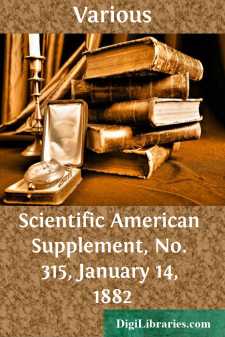Categories
- Antiques & Collectibles 13
- Architecture 36
- Art 48
- Bibles 22
- Biography & Autobiography 813
- Body, Mind & Spirit 142
- Business & Economics 28
- Children's Books 15
- Children's Fiction 12
- Computers 4
- Cooking 94
- Crafts & Hobbies 4
- Drama 346
- Education 46
- Family & Relationships 57
- Fiction 11828
- Games 19
- Gardening 17
- Health & Fitness 34
- History 1377
- House & Home 1
- Humor 147
- Juvenile Fiction 1873
- Juvenile Nonfiction 202
- Language Arts & Disciplines 88
- Law 16
- Literary Collections 686
- Literary Criticism 179
- Mathematics 13
- Medical 41
- Music 40
- Nature 179
- Non-Classifiable 1768
- Performing Arts 7
- Periodicals 1453
- Philosophy 64
- Photography 2
- Poetry 896
- Political Science 203
- Psychology 42
- Reference 154
- Religion 513
- Science 126
- Self-Help 84
- Social Science 81
- Sports & Recreation 34
- Study Aids 3
- Technology & Engineering 59
- Transportation 23
- Travel 463
- True Crime 29
The Mirror of Literature, Amusement, and Instruction Volume 19, No. 550, June 2, 1832
by: Various
Categories:
Description:
Excerpt
RARE ARCTIC BIRDS.
THE WHITE-HORNED OWLTHE COCK OF THE PLAINSLEGS AND FEET OF THE MOUNTAIN GROUSE.Few of the results of recent expeditions of discovery have been so interesting to the public as their contributions to zoological history. Many important additions to geographical science have also been made by these journeys into countries hitherto unexplored, or but imperfectly known by Europeans; but the interest is not of that attractive character which is more or less attached to the natural history of these districts. The great delight that we take in the latter species of knowledge is referable to the curiosity we feel respecting the inhabitants of a country after we have once been assured of its existence. Our first inquiries naturally enough relate to the tenants of our own species; we then ask what description of quadrupeds are found over its plains, and how far they enlarge or circumscribe the enjoyments and liberty of sovereign man; the birds that warble in its groves, the insects that flutter in its breeze, the fish that tenant its seas, rivers, and lakes, and the plants that wave in wild luxuriance on its hills and dales; and by comparing all these varieties with the natural characteristics of our own country, and contrasting their differences with others, we are enabled, in some degree, to appreciate, by the linked gradations, the order and harmony that reign throughout nature—the minute beauty of parts which are so essential to the perfection of the grand whole.
The last overland expedition to the Polar sea, under the command of Captain Sir John Franklin, was peculiarly fortunate in the collection of objects of natural history, which indeed were too numerous for the limits of an appendix, such as had appeared with the narratives of previous expeditions. Hence the number of the specimens warranted their publication in a separate form, under the able superintendance of Dr. Richardson, surgeon and naturalist to the expedition, aided by Mr. Swainson. The great expense of the requisite embellishment of the ornithological portion, however, threatened a formidable obstacle to its completeness; but this was met by a liberal grant of one thousand pounds by the British Government, to be applied solely towards the expense of the engravings—the present being the first zoological work ever published with the sterling assistance of His Majesty's Treasury. The first part of this truly great national work appeared some time since, with 28 spirited figures of Mammalia, from drawings by Landseer; the entomological and botanical parts are preparing for publication; and that of The Birds, (to which we are indebted for the annexed Cuts,) has very recently appeared.
Dr. Richardson, with zealous attachment to his pursuits, passed seven summers and five winters surrounded by the objects he has described with such fidelity. He is, therefore, not a mere book naturalist, but he has studied the habits and zoological details of the living animals; Mr. Swainson having assisted the Doctor in the systematic arrangement and production of the plates....












